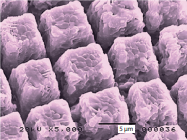Laser Micromachining System
All-in-One, Versatile, User-Friendly Material Processing Solution
-
-
-
-
- All-in-One, Compact & User-Friendly Design
-
-
-
-
-
-
-
- High-Performance for Versatile Applications
-
-
-
-
-
-
-
- Customizable & Scalable for Diverse Industries
-
-
-
The Laser Micromachining Systems We Offer:

All-in-One, Compact & User-Friendly Design
-
- Fully integrated system with built-in laser, thermal management & live microscope
- Compact, air-cooled design ensured portability and quick setup in any workspace
- Real-time alignment and quality checks with live microscope imaging for precision

High-Performance for Versatile Applications
-
- ns & ps pulsed DPSS laser with up to 40kW peak power and 100 kHz rep. rate
- 532 & 266nm options for a wide range of materials, transparent substrates
- High resolution & speed for micro drilling, cutting, ablation & 3D microfabrication

Customizable & Scalable for Diverse Industries
-
- Tailored options for various electronic, biomedical device & optic materials
- Optional add-ons to expand functionality & adapt to future project needs
- Optimized for anti-counterfeiting, microelectronics & optical substrate processing
RPMC’s Laser Micromachining Systems provide an all-in-one, compact solution for high-precision and high-resolution material processing. Designed for versatility, these systems feature nanosecond & picosecond pulsed lasers available at 532nm and 266nm, offering high peak power and spatial resolution. The integrated live microscope ensures real-time alignment and quality checks, making it an invaluable tool for applications like micro drilling, cutting, and 3D microfabrication. Whether working with transparent substrates or diverse materials in industries such as electronics, biomedical devices, or anti-counterfeiting, these systems deliver unmatched precision and reliability. With flexible configurations and scalability, RPMC’s micromachining systems are ready to meet your evolving needs.
| Picture | Part Number | Wavelength (nm) | Type | Description |
|---|---|---|---|---|

|
MicroMake | 266, 532 | Pulsed DPSS Lasers, High Peak Power, Turn-Key System | Micromachining System, ns/ps pulsed, 266-532nm, up to 40kW, up to 100kHz |

 SHIPS TODAY
SHIPS TODAY 

